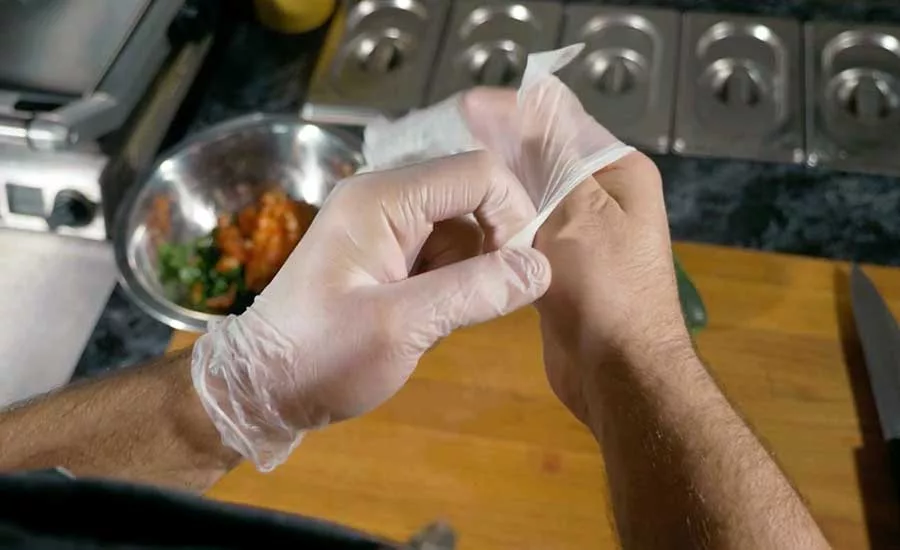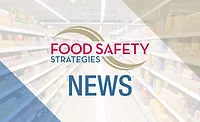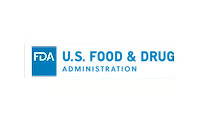The Importance of Third-Party Gap Assessment for a Food Safety Management Program
An unbiased gap assessment of a foodservice business' FSMP should be performed by a third party, using a defined set of standards for each business function

The food safety management program (FSMP) in a foodservice business should be established and staffed to ensure that all food safety risks are properly managed. This FSMP should periodically be benchmarked against the most current regulatory requirements and best-in-class industry food safety program standards. The foodservice industry uses these regulations and standards to maximize food safety risk management of the known biological, chemical, and physical hazards associated with foodservice. It is especially important to review a FSMP during a significant change in operations (e.g., increase in off-premise and/or ghost kitchen sales), menu changes or additions, significant changes in food ingredient suppliers, or a significant increase in sales volume per location/facility (i.e., expansion of the business or new concepts).
A gap assessment should be performed by a third party, using a defined set of standards for each business function to ensure an unbiased assessment of each. It should include a review of the program management team's responsibilities and corporate governance, all operating procedural documentation related to systems and specifications for both supply chain and foodservice operations, and training/education, facilities design, and execution/compliance measurements of foodservice operations. The food safety management team should coordinate and review all deficiencies identified. The team should also develop an action plan that is prioritized by level of risk, and use this plan as a road map for continuous improvement of the FSMP. A gap assessment should also be performed on a periodic basis to ensure continuous improvement of the FSMP's effectiveness. This is most effective early in the growth of a business or after the FSMP has been well established. It helps ensure that a mature FSMP is being properly executed to prevent food safety hazards within the business.
Determine the Standards to Be Used for the Gap Assessment
The work of the FSMP in a corporate foodservice business function should define all food safety specifications and manage food safety risk associated with the supply chain, distribution of foods (including off-premise sales), and the foodservice operations. Therefore, the standards chosen for gap assessment should be FSMP elements that are based on foodservice business management. The food safety management team should choose the specific standards that will be used in the gap assessment. These standards should include program elements used by best-in-class foodservice businesses and recognized as such by industry and regulatory experts.
A foodservice standard has been developed by the Safe Quality Food Institute (SQFI) in collaboration with the National Restaurant Association.1 It provides a detailed description of the elements of an FSMP that should be developed and executed by a foodservice business. This standard was developed to assist foodservice businesses to become certified by this Global Food Safety Initiative (GFSI) certification body. Foodservice industry companies can use it as a resource for comparison of their FSMPs. It is also a useful standard if foodservice business stakeholders decide to pursue SQFI certification of a program after a gap assessment is performed.
The SQFI standard (Table 1) includes program elements specific to both corporate management (e.g., Specifications, Supplier Approval and Recipe Development or Verification and Validation) and foodservice operations (e.g., Site Requirements and Approval or Equipment and Utensil Design and Maintenance, etc.). However, one important part that is missing from the standards is the corporate governance of the business functional areas that is responsible to coordinate, manage, monitor, and ensure execution of the program element standards in the business. Thus, it is important to include the governance (via Business Function Categories) of food safety management in the gap assessment.
These business function categories (Table 2) often exist in different departments of the business—e.g., supply chain food safety management in the procurement or supply chain department, employee food safety training in the restaurant operations department, etc. Moreover, these business functions are often led by managers who are not experienced in food safety risk management. They may not be able to define which business functional area(s) should collaborate to execute and manage product recalls, withdrawals, or performs crisis management responsibilities for the business. Thus, the gap assessment should also include the corporate governance of food safety management responsibilities and cooperations to ensure food safety.
To fully assess food safety management in foodservice business locations (e.g., restaurants), the gap assessment should also measure compliance to the most current U.S. Food and Drug Administration (FDA) Food Code2 to ensure that foodservice operations are capable of controlling the hazards associated with food preparation (Tables 3, 4, 5). This also ensures that foodservice operations are directly aligned to state and local health department rules for regulatory compliance execution. For example, the most current Food Code2 now recommends allergen labeling of bulk food dispensing equipment so that customers that self-serve food ingredients or products are aware of the allergen risk of the foods.
Looking for quick answers on food safety topics?
Try Ask FSM, our new smart AI search tool.
Ask FSM →
The Food Code also recommends the use of a Process HACCP plan and a food safety management system (Annex 2)2 to ensure that all hazards are identified in foodservice establishments, and that each is controlled via training, monitoring, and management of corrective actions.3 Benchmarking the FSMP elements for foodservice operations against the Food Code aligns the operations to better regulatory compliance (correlating to health inspections) and maximizes the risk management of food safety hazards based on the specific menu.
One area in which it is difficult to perform an assessment of gaps within a foodservice business is its food safety culture. Some standards for food safety culture have been set in other GFSI certification schemes (see BRCGC Food Safety Culture for food manufacturers4), but there is currently no legitimized best-in-class standard for the foodservice business enterprise. Assessment of a business' commitment to food safety management is an element of food safety culture; however, it is not the complete set of attributes within a food safety culture. A recent study performed by the Association of Food and Drug Officials (AFDO), detailed in this issue's Cover Story , is designed to define the attributes of food safety culture within a foodservice business. In the future, it may be feasible to utilize these attributes in a gap assessment as a foodservice standard for food safety culture.
Compare and Document Program Elements against the Standard
After the program elements and the standards for business functional categories are selected, the gap assessment is ideally performed by a third party not affiliated with the business. This will ensure an unbiased/transparent assessment of requirements and deficiencies within all areas of the food business. The third party should have expertise in foodservice food safety program management and business functional categories, preferably experts that have developed and/or managed an FSMP for a foodservice business that includes knowledge in supply chain and foodservice operations.
The third party should perform the assessment by first identifying where the business function categories are managed via a business organization chart or descriptions (Table 2), which program elements exist in each (either present or absent), and who is responsible for the program element(s). Then, each program element can be accessed via review of the most current business documentation related to it (e.g., the ingredient and product recall program), as well as the appropriateness of the documented program element to the food safety standard. The documentation review should include an assessment of all food safety management operational specifications for recipes, Process HACCP plans, standard operating procedures, prerequisite program specifications5 (including the sanitation program), training requirements, facility design, etc., for foodservice operations.
The third party should then perform site visits to representative foodservice facilities to make observations of all documented specifications, determine which of these specifications are being executed, and assess what specifications should be developed based on the food safety risk of the operations. Finally, stakeholder interviews should be performed to measure the knowledge of the existing program elements. These interviews should be based on each stakeholder's job description and include business leaders in the organization to determine how accountability is managed. Stakeholder interviews are important, as some program elements of the standard may not be documented but are instead managed by the stakeholder. In some cases, program elements could be reported as absent but exist in other forms (e.g., as part of a supplier expectations manual or in another department's program specifications).
It is important that the identified gaps are documented on a draft gap assessment report and provided to the food safety management team at each phase of the assessment to ensure that any high-risk issues (e.g., observations of incorrect food storage procedures observed during a foodservice facility walk-through) are identified and corrected immediately. Likewise, some gaps in the execution of food safety controls in existing operating procedures (e.g., improper cleaning and sanitation methods) should be addressed immediately. The business stakeholders should carefully review all data from the assessment to ensure that it is correct and that nothing was missed during the documentation review and stakeholder interviews. They should also review the data to remove any redundancies between business functions that collaborate to manage the same program element.
Develop the Action Plan and Priorities Based on Risk
The food safety management team should coordinate and review all deficiencies identified by the gap assessment with the third party, and develop an action plan prioritized on the level of risk identified. An action plan is a set of strategic steps that need to be taken to resolve deficiencies identified by a gap assessment. The action plan should include recommendations by the third party on best practices to resolve the gap. In some cases, a program element may exist but is not updated and/or not managed by the appropriate business function. In other cases, a program element may exist, but it is not being executed by the foodservice operation. Thus, every gap is important to include in a prioritized action plan. Some of these gaps can be more easily addressed; for example, by moving the responsibility to a different business function or by providing training and auditing compliance to training.
Once all the gaps have been identified, it is important to address those with the highest risk first and document that the program element has been added or updated, or document the plan and date as to when the gap will be resolved. Some gaps in program elements may not be easily resolved at the time of the report (e.g., traceability of all food ingredients distributed to each foodservice location), and this should be noted on the action plan. A written explanation as to why a gap was not resolved should be documented.
Recommendations
A gap assessment should be performed on the foodservice FSMP on a periodic basis to ensure continuous improvement of the program effectiveness. It is sometimes advisable to perform partial gap assessments of business function categories (Table 2). An example is a partial gap assessment of the food safety management of the supply chain because the business has moved into other countries or significantly changed the menu and source of ingredients and products.
A gap assessment of the program can also be most effective early in the food business growth, as a means to help build out the program; or after the FSMP has been well established, to ensure that a mature FSMP is being executed properly across the enterprise to prevent food safety hazards within the business. A gap assessment of the FSMP is, therefore, a necessary tool for ascertaining that the business is doing all it can to ensure the safety of its food for its customers, and to protect the brand reputation and associated value of the business for all stakeholders.
References
- Malenich, Sarah. "Safe Quality Food Institute and the National Restaurant Association Create SQF Food Safety Code for Foodservice. FMI Bog. March 22, 2019. https://www.fmi.org/blog/view/fmi-blog/2019/03/22/safe-quality-food-institute-and-the-national-restaurant-association-create-sqf-food-safety-code-for-foodservice.
- U.S. Food and Drug Administration. "Food Code 2022." December 28, 2022. https://www.fda.gov/food/fda-food-code/food-code-2022.
- King, Hal. Food Safety Management Systems. New York, New York: Springer, 2020. https://link.springer.com/book/10.1007/978-3-030-44735-9.
- BRCGS. "About the Food Safety Culture Assessment." 2023. https://www.brcgs.com/our-standards/food-safety-culture-excellence/.
- King, Hal. "Sanitation Prerequisite Programs as a Necessary Component of FSMS for Foodservice Establishments." Food Safety Magazine October/November 2022. https://digitaledition.food-safety.com/october-november-2022/column-sanitation/.
Hal King, Ph.D., is managing partner of Active Food Safety, www.activefoodsafety.com, and a member of the Editorial Advisory Board of Food Safety Magazine. He can be reached at halking@activefoodsafety.com.









